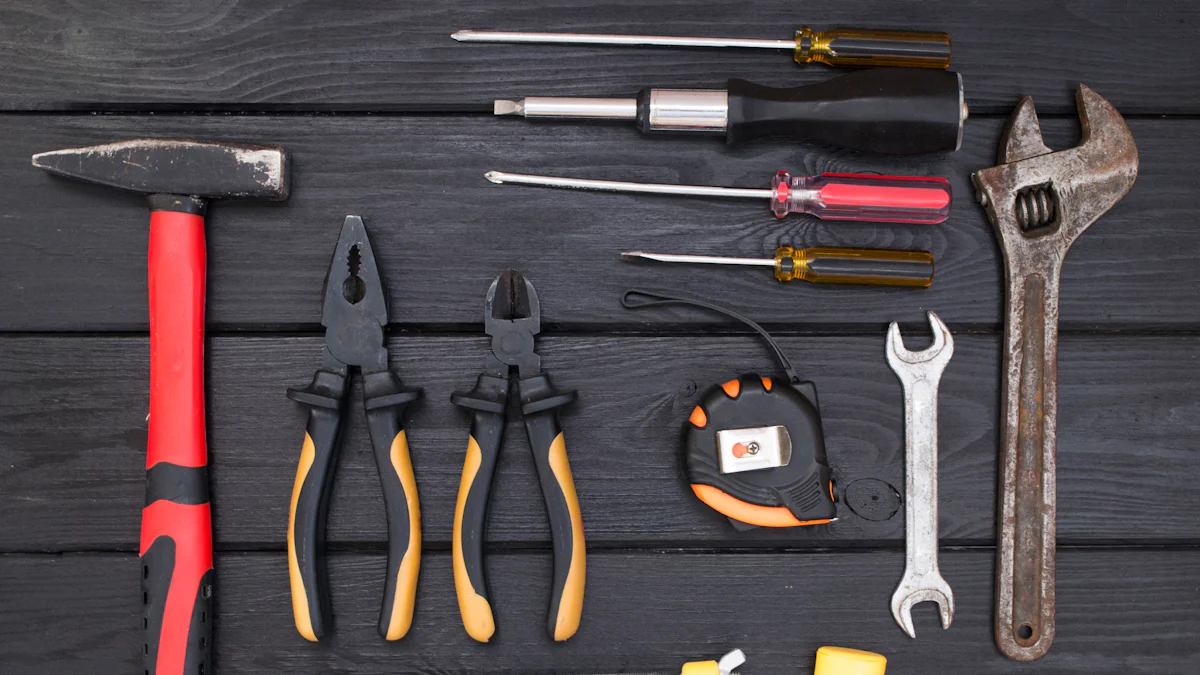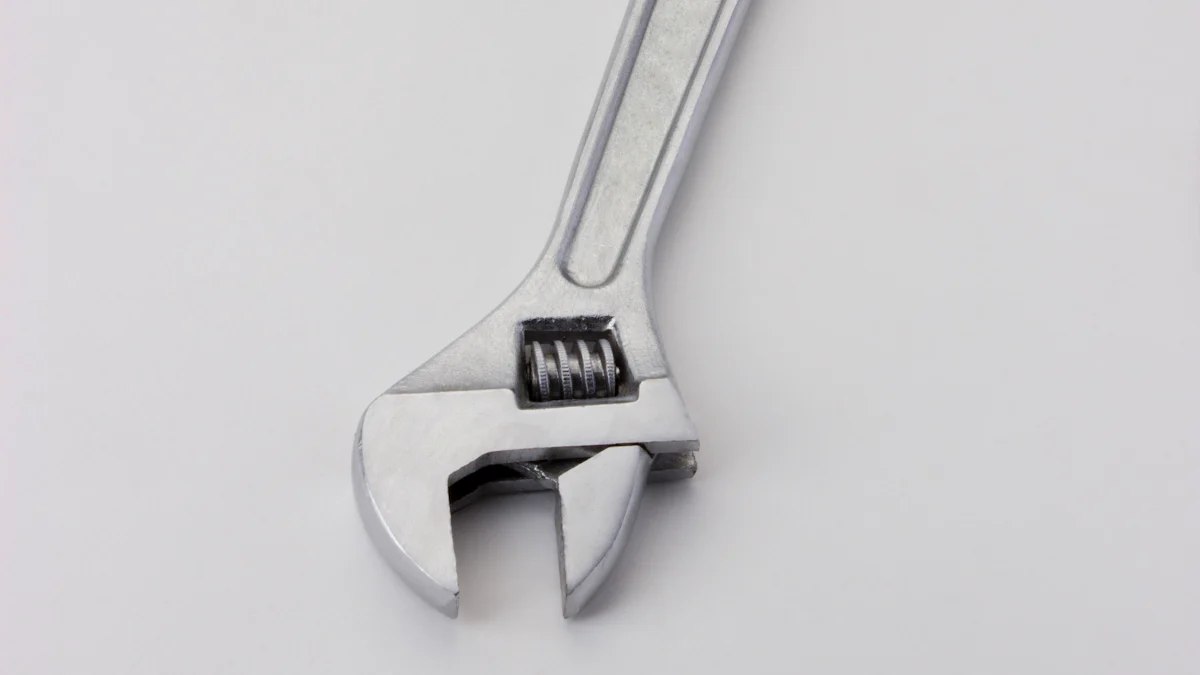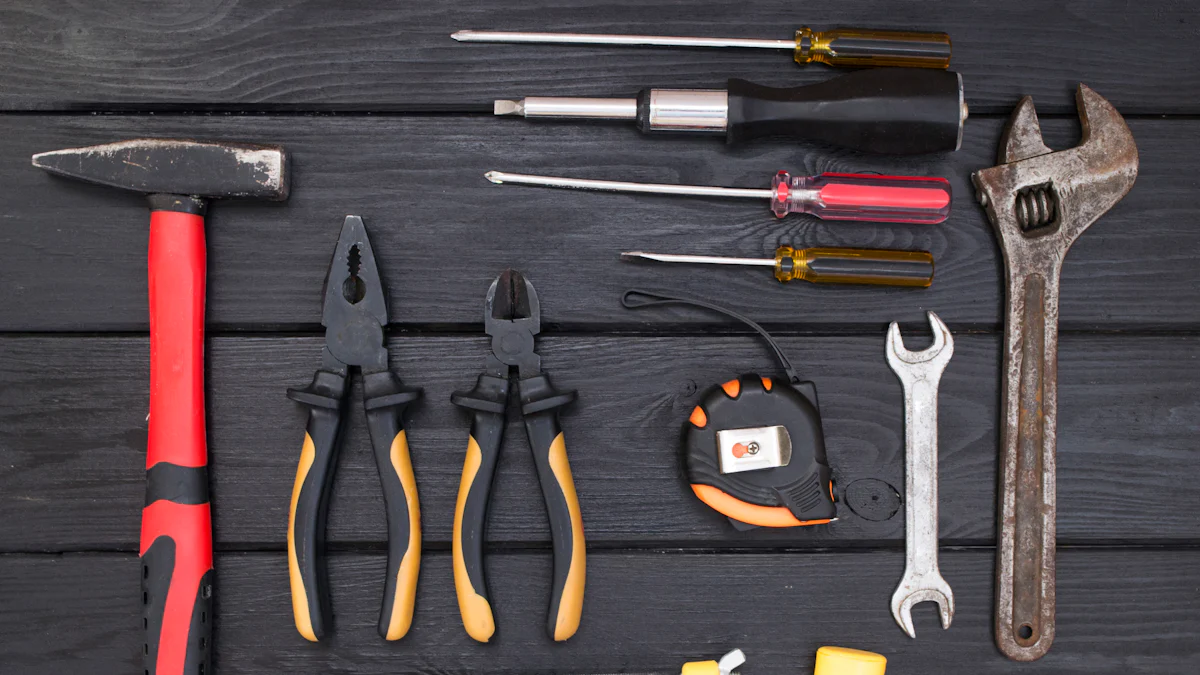
A hook spanner is a specialized tool designed to tighten and loosen nuts with a periphery that lacks holes. This tool plays a significant role in various industries, facilitating the upkeep and assembly of machinery, ships, and aircraft. Common uses include adjusting collars, lock nut rings, and bearings. The hook spanner has contributed to advancements in aviation technology by aiding in the assembly and maintenance of aircraft components. Originating from mechanical and technological advancements, the hook spanner has enabled engineers and mechanics to work efficiently with a wide range of fasteners.
Understanding Hook Spanners

Definition and Purpose
What is a Hook Spanner?
A hook spanner is a specialized tool designed to tighten and loosen nuts with a periphery that lacks holes. The tool features a hook-shaped jaw that fits into the slots or notches of the target nut. This design allows for secure gripping and precise adjustments. Hook spanners are essential in various industries, including machine and plant construction, food processing equipment, and medical technology.
Why is it called a Hook Spanner?
The name “hook spanner” derives from the tool’s distinctive hook-shaped jaw. This jaw hooks into the slots or notches of the nut, enabling the user to apply torque effectively. The term “spanner” is commonly used in British English to refer to what Americans call a wrench. Therefore, a hook spanner is essentially a wrench with a hook-shaped end.
Types of Hook Spanners
Fixed Hook Spanners
Fixed hook spanners have a non-adjustable, fixed jaw size. These tools are designed for specific nut sizes and provide a secure fit. Fixed hook spanners are commonly used in applications where the nut size remains consistent. The fixed design ensures durability and reliability, making these spanners ideal for repetitive tasks.
Adjustable Hook Spanners
Adjustable hook spanners feature an adjustable jaw that can accommodate various nut sizes. This versatility makes them suitable for a wide range of applications. Adjustable hook spanners are particularly useful in situations where different nut sizes are encountered. The adjustable mechanism allows for quick and easy size changes, enhancing efficiency.
Pin Hook Spanners
Pin hook spanners, also known as pin wrenches, have a pin instead of a hook. The pin fits into a hole on the nut’s periphery, providing a secure grip. These spanners are often used for nuts with pre-drilled holes. Pin hook spanners are commonly employed in the assembly and maintenance of machinery components.
Materials and Construction
Common Materials Used
Manufacturers typically construct hook spanners from high-quality steel. This material offers excellent strength and durability. Some hook spanners may also feature a chrome or nickel coating to prevent corrosion. The choice of material ensures that the tool can withstand rigorous industrial use.
Durability and Strength
The durability and strength of a hook spanner depend on its construction material and design. High-quality steel provides the necessary robustness for demanding tasks. The tool’s design, including the thickness and shape of the jaw, also contributes to its overall strength. Properly constructed hook spanners deliver reliable performance and long service life.
How to Use a Hook Spanner

Preparing for Use
Safety Precautions
Always prioritize safety when using a hook spanner. Wear protective gloves to prevent hand injuries. Ensure the work area is well-lit to avoid accidents. Inspect the hook spanner for any signs of damage or wear. A damaged tool can cause accidents. Secure the object that needs adjustment to prevent movement. This stability ensures precise and safe operation.
Selecting the Right Hook Spanner
Choose the appropriate hook spanner for the task. Identify the size of the nut or component. Fixed hook spanners suit specific sizes, while adjustable ones offer versatility. Pin hook spanners work best for nuts with pre-drilled holes. Match the tool to the task for effective results.
Step-by-Step Guide
Positioning the Hook Spanner
Position the hook spanner correctly on the nut. Align the hook or pin with the slots or holes on the nut’s periphery. Ensure a firm grip to prevent slipping. Proper positioning guarantees efficient force application.
Applying Force
Apply force steadily and evenly. Use controlled movements to avoid damaging the nut or tool. Gradual force application ensures precision. Avoid sudden or jerky motions that can lead to slippage or injury.
Loosening and Tightening Techniques
For loosening, turn the hook spanner counterclockwise. Apply consistent pressure until the nut begins to move. For tightening, turn the tool clockwise. Ensure the nut is secure but avoid over-tightening. Proper technique prevents damage to both the nut and the tool.
Common Mistakes to Avoid
Incorrect Positioning
Incorrect positioning leads to ineffective force application. Always align the hook or pin properly with the nut. Misalignment can cause slipping and potential injury. Ensure a secure grip before applying force.
Over-tightening or Under-tightening
Over-tightening can damage the nut or the component. Under-tightening may result in a loose fit. Apply just enough force to secure the nut without causing damage. Proper tightening ensures the longevity of the components.
Advantages and Disadvantages
Advantages of Using a Hook Spanner
Precision and Control
A hook spanner offers exceptional precision and control. The hook-shaped jaw fits securely into the slots or notches of the nut. This design allows for precise adjustments. Users can apply torque accurately, ensuring that the nut tightens or loosens as needed. The secure grip minimizes the risk of slippage, enhancing safety and efficiency.
Versatility
Hook spanners exhibit remarkable versatility. Adjustable hook spanners can accommodate various nut sizes. This feature makes them suitable for a wide range of applications. Industries such as machine construction, food processing, and medical technology benefit from this versatility. The ability to use one tool for multiple tasks increases efficiency and reduces the need for multiple tools.
Disadvantages of Using a Hook Spanner
Limited to Specific Nuts
Hook spanners have limitations regarding the types of nuts they can handle. The design suits nuts with slots or notches on their periphery. This specificity means that hook spanners cannot work on all nut types. Other wrenches, like open-ended or socket wrenches, may be necessary for different applications.
Potential for Damage if Misused
Improper use of a hook spanner can lead to damage. Over-tightening can deform the nut or the component. Incorrect positioning can cause the tool to slip, potentially damaging the nut and causing injury. Users must follow proper techniques to avoid these issues. Proper training and adherence to guidelines ensure safe and effective use.
FAQs and Key Takeaways
Frequently Asked Questions
What sizes do hook spanners come in?
Hook spanners come in various sizes to fit different nuts. Manufacturers produce fixed hook spanners in specific sizes. Adjustable hook spanners can accommodate a range of nut sizes. Pin hook spanners also vary in size to match nuts with pre-drilled holes. Users should check the specifications to select the correct size for their task.
Can a hook spanner be used on any nut?
A hook spanner cannot be used on every nut. The tool is designed for nuts with slots or notches on their periphery. Hook spanners work well with nuts conforming to standards like DIN 1804. For nuts without slots or notches, other tools such as open-ended wrenches or socket wrenches are more suitable. Users must choose the appropriate tool based on the nut’s design.
Key Takeaways
Summary of Main Points
A hook spanner is a specialized tool for tightening and loosening nuts with slots or notches. The tool offers precision and control, making it valuable in various industries. Fixed, adjustable, and pin hook spanners serve different purposes. High-quality materials ensure durability and strength. Proper use involves correct positioning and controlled force application. Users should avoid common mistakes like incorrect positioning and over-tightening.
Final Tips for Using a Hook Spanner
Users should always prioritize safety by wearing protective gloves and ensuring a stable work area. Selecting the right hook spanner for the task is crucial. Proper positioning of the tool on the nut ensures effective force application. Applying steady and even force prevents damage to the nut and tool. Users should follow guidelines to avoid over-tightening or under-tightening. Proper training and adherence to best practices enhance the tool’s effectiveness and longevity.
A hook spanner proves essential for various industries, offering precision and control in tasks involving nuts with slots or notches. Practicing proper usage techniques ensures safety and efficiency. Selecting the right tool and applying steady force prevents damage. Including a hook spanner in a toolkit enhances versatility and reliability. This tool’s value lies in its ability to handle specific fasteners effectively, making it indispensable for professionals and DIY enthusiasts alike.
See Also
Scooter Upgrades: High-Quality Parts for Optimal Performance
Discovering Diverse Sock Options for Both Genders
Winter Comfort: Stay Warm with Plush Towel Socks
